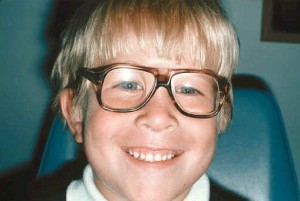Amblyopia, or lazy eye, is closely related to strabismus. Children learn to suppress double vision so effectively that the deviating eye gradually loses vision. During the first nine years of life the eye – brain pathways are developing and if one of the eyes is at a functional disadvantage, the pathway from that eyes ability to see may not develop normally.

This condition of poor vision in an eye is called amblyopia and can occur from misalignment of an eye, obstruction of the visual pathway of an eye from a cataract or drooping upper eye lid (ptosis), or blurred vision (need for glasses). If amblyopia is not treated prior to age 9, the loss of vision can become permanent. Treatment for amblyopia can include glasses and patching the good eye to force the weaker eye to be used. Penalization of the good eye with dilating drops and blurred lens can also be used in the treatment of amblyopia. When strabismus and obstruction of the visual pathway are involved the treatment frequently also includes surgery.
